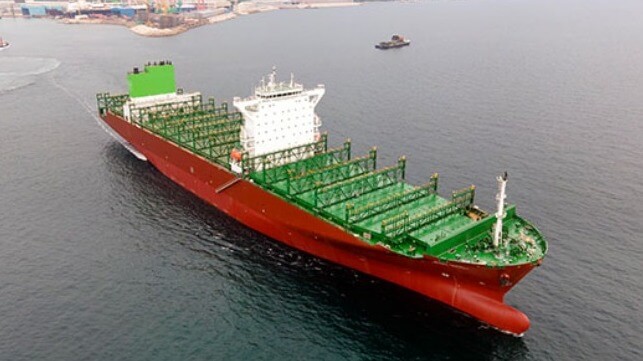HD Hyundai Receives Certification of New Steps in Vessel Automation

Efforts are continuing to develop higher levels of ship automation toward the goal of a large commercial vessel that will be able to operate fully independently making decisions on its navigation. South Korean shipbuilder HD Hyundai held a ceremony on November 27 to mark the next achievement which was also certified by receipt of an Approval in Principle issued both by the Korean Registry of Shipping (KR) and the Liberia State Flag Bureau (LISC).
HD Hyundai completed the successful demonstration of autonomous operation combined with remote control integrated into an 8,000 TEU containership. It was a key step in the continuing effort to commercialize third-stage automation, which is defined by the International Maritime Organization as a remotely controlled ship without seafarers on board. The ship is controlled and operated from another location.
The IMO recognizes four stages of automation with the final level being fully autonomous ships. When that is achieved, they expect the operating system of the ship to be able to make decisions and determine actions by itself. Previous tests have already demonstrated the first two steps which were decision support for the onboard crew and remote operations while the crew remains onboard.
During the most recent demonstrations, Hyundai highlights it achieved the first application of remote control where it was transferred between two remote operation centers. Like air traffic control for airplanes, this involves passing the vessel from one station to the next. Hyundai highlights this enables the continuity of remote operation making it possible to sail remotely on a long-distance route.
During the demonstration, Hyundai transferred control of the containership from its Digital Control Center located in Ulsan to the Digital Convergence Center located in Seongnam-si.
They point to several challenges in remote operations which have been anticipated by the latest technology. For example, there could be communication delays or unexpected situations during navigation. They also point to the danger of cyber threats. The demonstration combined remote control technology with autonomous navigation capacities. The system considered the “special nature of the ship’s operating environment,” in addition to remote steering and ship speed control.
“Through this certification, we have been able to establish a core foundation for the commercialization of autonomous navigation and remote control technologies,” said an official of HD Hyundai during the presentation. “We will lead the way in international standardization of autonomous operation technology and lead the new future of the shipping industry.”
South Koprea’s Ministry of Trade, Industry, and Energy and the Ministry of Oceans and Fisheries continue to support the testing and are creating the environment develop the technology. HD Hyundai highlights that it is operating in a “regulatory sandbox project,” where it is receiving permission for the demonstrations while the global regulations for autonomous operations are still under development.
Autonomous navigation and remote control are among the advanced technologies that South Korea is looking to develop to build its competitive edge for next-generation shipping.
No comments:
Post a Comment